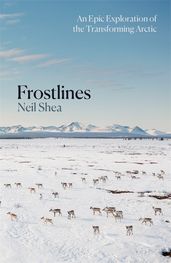
Synopsis
'Magnificent and moving. Shea writes with the magic of an aurora illuminating how life is rapidly changing across the cold expanses of the Arctic' - Steve Brusatte, Sunday Times bestselling author of The Rise and Fall of the Dinosaurs
A breathtaking and epic exploration of the transforming Arctic.
The Arctic was once a place seemingly frozen in time. Now, while the old cold world can still be glimpsed in the herds of caribou, the hidden lives of wolves, and the hunting skill of an Inupiat elder, there is a new Arctic emerging.
National Geographic writer Neil Shea begins his journey with the wolves of Canada’s Ellesmere Island, and travels among the Indigenous Netsilingmiut and Tlicho peoples of Nunavut and the Northwest Territories. In the Barren Lands, perched on an esker, he watches bears, or Big Men. In Alaska he tracks the patterns of caribou, now shifting after thousands of years of predictability, and in the European Arctic he explores the new Cold War that is rising between Russia, China, Europe, and the United States over who controls the pole, and who will reap its riches as the ice melts.
Frostlines is an expansive yet intimate revelation of the Arctic during a time of crisis, and a journey along the threshold of this stunning and sometimes frightening world. What Shea finds is not one Arctic but many – all linked by shattering cold, seasons of darkness, and pure, sparkling light.
Details
Reviews
Magnificent and moving . . . This stunning book—part travelogue, part history, part popular science—will give you a new appreciation for a place, and its people, and how they together are confronting the upheaval of the modern world.
Profound and moving. In prose that shines with insight and astute observation, the intersecting stories of people, animals, and the land come to vivid life in these pages. Shea’s brilliant writing offers clear-eyed and respectful meditations on the meanings of community and belonging in times of upheaval, in the past, present, and future.
From wolves and whales to weaponized borders, Neil Shea cinches a singular storyline across the Arctic cap of our rapidly changing planet, bearing witness to loss and conflict while holding tight to wonder and awe
With evocative and time-bending writing, Neil Shea honors the historic agency of animals and peoples too often idealized and ‘managed.’
